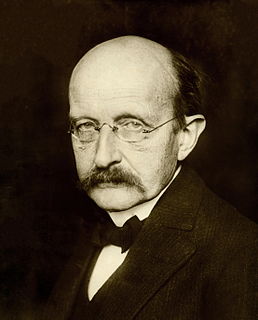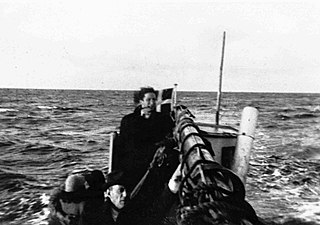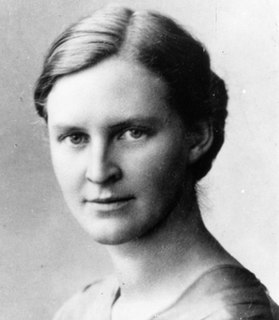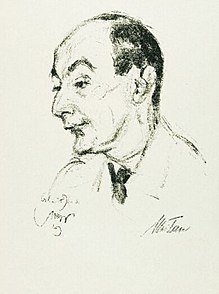
Knut Hamsun was a Norwegian writer who was awarded the Nobel Prize in Literature in 1920. Hamsun's work spans more than 70 years and shows variation with regard to consciousness, subject, perspective and environment. He published more than 20 novels, a collection of poetry, some short stories and plays, a travelogue, works of non-fiction and some essays.

Max Karl Ernst Ludwig Planck was a German theoretical physicist whose discovery of energy quanta won him the Nobel Prize in Physics in 1918.
1944 (MCMXLIV) was a leap year starting on Saturday of the Gregorian calendar, the 1944th year of the Common Era (CE) and Anno Domini (AD) designations, the 944th year of the 2nd millennium, the 44th year of the 20th century, and the 5th year of the 1940s decade.

The Norwegian resistance to the occupation of Norway by Nazi Germany began after Operation Weserübung in 1940 and ended in 1945. It took several forms:

George Charles de Hevesy was a Hungarian radiochemist and Nobel Prize in Chemistry laureate, recognized in 1943 for his key role in the development of radioactive tracers to study chemical processes such as in the metabolism of animals. He also co-discovered the element hafnium.

The Danish resistance movements were an underground insurgency to resist the German occupation of Denmark during World War II. Due to the initially lenient arrangements, in which the Nazi occupation authority allowed the democratic government to stay in power, the resistance movement was slower to develop effective tactics on a wide scale than in some other countries.

The Danish resistance movement, with the assistance of many Danish citizens, managed to evacuate 7,220 of Denmark's 7,800 Jews, plus 686 non-Jewish spouses, by sea to nearby neutral Sweden during the Second World War. The arrest and deportation of Danish Jews was ordered by the German leader Adolf Hitler, but the efforts to save them started earlier due to the plans being leaked on September 28, 1943 by German diplomat Georg Ferdinand Duckwitz.

Maximo Guillermo "Max" Manus DSO, MC & Bar was a Norwegian resistance fighter during World War II, specialising in sabotage in occupied Norway. After the war he wrote several books about his adventures and started the successful office supply company Max Manus AS.

Gunnar Fridtjof Thurmann Sønsteby DSO was a member of the Norwegian resistance movement during the German occupation of Norway in World War II. Known by the nickname "Kjakan" and as "Agent No. 24", he was the most highly decorated citizen in Norway, including being the only person to have been awarded the War Cross with three swords, Norway's highest military decoration.

The occupation of Norway by Nazi Germany during the Second World War began on 9 April 1940 after Operation Weserübung. Conventional armed resistance to the German invasion ended on 10 June 1940, and Nazi Germany controlled Norway until the capitulation of German forces in Europe on 8/9 May 1945. Throughout this period, Norway was continuously occupied by the Wehrmacht. Civil rule was effectively assumed by the Reichskommissariat Norwegen, which acted in collaboration with a pro-German puppet government, the Quisling regime, while the Norwegian king Haakon VII and the prewar government escaped to London, where they formed a government in exile. This period of military occupation is, in Norway, referred to as the "war years", "occupation period" or simply "the war".
Ernst is both a surname and a given name, the German, Dutch, and Scandinavian form of Ernest. Notable people with the name include:

Mildred "Mili" Elizabeth Fish-Harnack was an American literary historian, author, translator, and member of the German resistance against the Nazi regime. After marrying Arvid Harnack, she moved with him to Germany, where she began her career as an academic. Fish-Harnack spent a year at the University of Jena and the University of Giessen working on her doctoral thesis. At Giessen, she witnessed the beginnings of Nazism. In 1930, the couple moved to Berlin and Fish-Harnack became an assistant lecturer in English and American literature at the University of Berlin. In the early 1930s, the couple became increasingly interested in the Soviet communist system. Harnack established a writers' group that studied the Soviet planned economy, and the couple were able to arrange a visit to the Soviet Union during August 1932 and by 1933 they were fully committed to Soviet ideology. Through contacts at the American embassy, Fish-Harnack became friends with Martha Dodd, who became a part of her salon where they discussed current affairs. In 1936, Fish-Harnack's translation of Irving Stone's biography of Vincent van Gogh, Lust for Life, was published.

In the decades since the Holocaust, some national governments, international bodies and world leaders have been criticized for their failure to take appropriate action to save the millions of European Jews, Roma, and other victims of the Holocaust. Critics say that such intervention, particularly by the Allied governments, might have saved substantial numbers of people and could have been accomplished without the diversion of significant resources from the war effort.

The Book Thief is a novel by the Australian author Markus Zusak, and is his most popular book. Published in 2005, The Book Thief became an international bestseller and was translated into 63 languages and sold 16 million copies. It was adapted into the 2013 feature film, The Book Thief.

The German occupation of Norway began on 9 April 1940. In 1942, there were at least 2,173 Jews in Norway. At least 775 of them were arrested, detained and/or deported. More than half of the Norwegians who died in camps in Germany were Jews. 742 Jews were murdered in the camps and 23 Jews died as a result of extrajudicial execution, murder and suicide during the war, bringing the total of Jewish Norwegian dead to at least 765, comprising 230 complete households.

Odd Nansen was a Norwegian architect, writer, and humanitarian. He is credited with being a co-founder of UNICEF and for his humanitarian efforts on behalf of Jews in the early years of World War II.
Kaare Krabbe Filseth was a Norwegian newspaper editor who was killed during the occupation of Norway by Nazi Germany.
Sweden was a neutral state during World War II and was not directly involved in the Holocaust in German-occupied Europe. Nonetheless, the Swedish government maintained important economic links with Nazi Germany and there was widespread awareness within the country of its policy of persecution and, from 1942, mass extermination of Jews.















